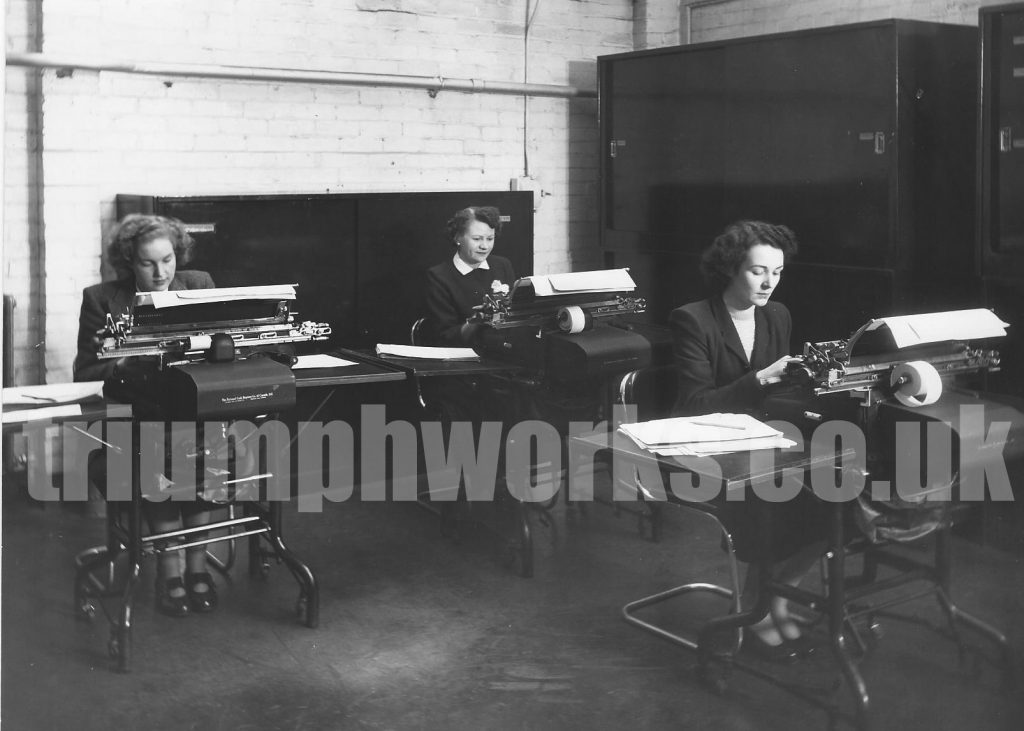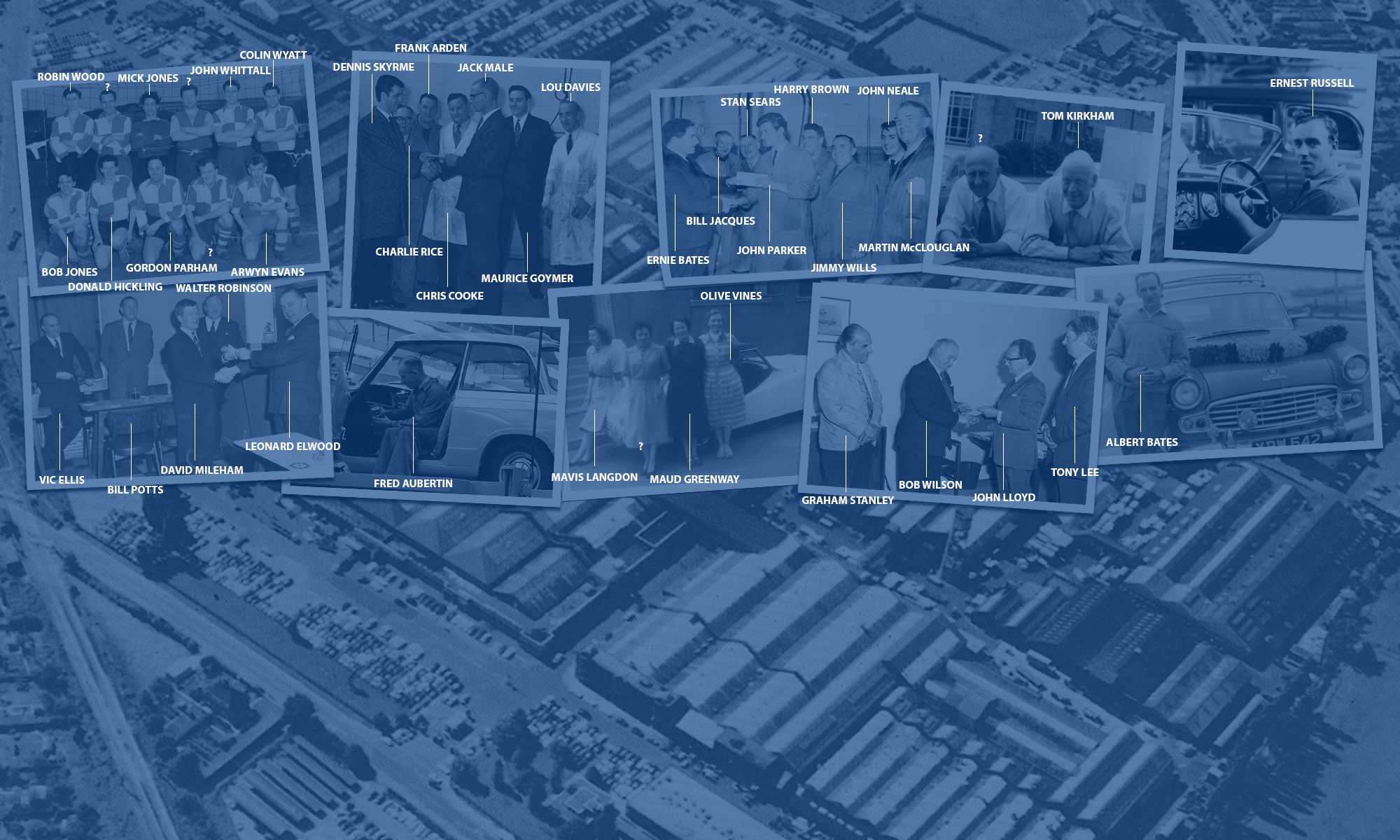Miss Jennifer Hargreaves, a secretary in Dealer Development, Fletch. South, was married at Bulkington. Continue reading “Jennifer Hargreaves – Dealer Development”
My Job at Standard
By the late fifties, the electricians at Canley had devised a system whereby when car shells came from Liverpool they were hoisted by crane onto what was called skids, on the second floor. We then took charge with an electric panel in the basement of the building, among the stores. The track was on the ground floor, constantly on the move, each worker had a time limit to fit his piece.
Now my job with a couple of colleagues was to place the shells on the track from the floor above in a sequence that allowed the worker to complete his job. We could not place two overdrives to follow each other, or two Spitfires together. There were many snags, we had to have the cars in order, about twenty cars in front of the track to allow our typists to type the sequence for all depts to have the necessary parts in order. Also the sheets the girls typed out, only a little ‘o’ was typed above the car to denote an overdrive car, if she missed typing such then the car got the wrong engine fitted etc, and there was many things to sort out, disc brakes or drum brakes, left hand or right hand steering, so it ran on fine timing.
Continue reading “My Job at Standard”
Amazing response!
Thank you everyone for submitting to the site – and for the positive feedback. With a promotional push this week the entries have risen to 611 records. There are a huge number of emails from those that have contacted us, some complete with amazing detail and even photographs that we’ll add on too in due course. Thank you all!
Comptometers Part 1
Within minutes of each other we received two submission to the database for Comptometer operators, intrigued by this ‘new’ word we thought we’d investigate further.
Firstly the two submissions. The first from Eileen Butterly nee Mohan. Eileen worked as a comptometer operator in the wages department from 1956 until 1963. Married in 1962 with the name changed to Butterly and left to have a baby October 1963.
Minutes later Peter Lewis emailed through with details of his mother Irene Parsons – a Comptometer operator. Irene was at the company far earlier Peter thinks from around 1937 to 1937. He says she was involved with a trial to update the system but she beat the new fangled technology of the day. She managed to short out the electric supply to a large portion of the factory when a metal chair got earthed out in the office due to a flying lead to her machine got exposed!
Peter also sent a photo:

Irene is seen here sat rear right, in the middle of the photo.
The comptometer was the first commercially successful key-driven mechanical calculator, patented in the USA by Dorr E. Felt in 1887.
A key-driven calculator is extremely fast because each key adds or subtracts its value to the accumulator as soon as it is pressed and a skilled operator can enter all of the digits of a number simultaneously, using as many fingers as required, making them sometimes faster to use than electronic calculators. Consequently, in specialized applications, comptometers remained in use in limited numbers into the early 1990s, but with the exception of museum pieces, they have all now been superseded by electronic calculators and computers.
Sheila Morris
Sheila Morris, who as secretary to Mr L F Taylor, Final Finish superintendent, for four years, has left the Company and will be experiencing spending Christmas in Brazil. Continue reading “Sheila Morris”
Factory Photos (and a TR4) from 1967
Canadian Jack Blair recalls his brand new TR4 and a trip to Standard Triumph to collect it.
In December of 1967, I had travelled from my UK home in Manchester to London in order to join a group of friends on a ski trip to the Tyrol in Kitzbuhel, Austria. When I arrived I found that my good friend Art had bought a new MGB. He said he had been looking at the TRs as well, but decided on the MGB. He added that he heard a rumour that the TR4As were going to have their price reduced to make way for a new model. That was all the motivation I needed. With about four hours to go until our train left, I rushed to the dealer, negotiated a deal, phoned Calgary to get the money on a loan from my old, friendly, bank manager and bought my new TR4A for $2700. I barely made it back in time to catch the train to Kitzbuhel.
Continue reading “Factory Photos (and a TR4) from 1967”

